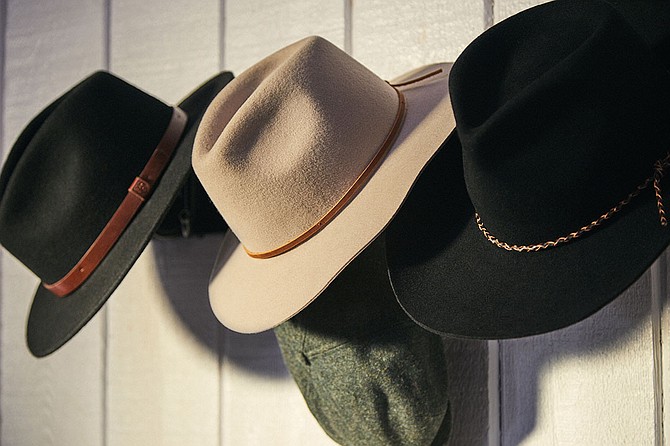Man this is a test!
None | 358
Historically, men and women wore hats as protection and status symbols, too. This time of year, people traded in the lighter, cooler straw hat for the warmer felt hat. Additionally, etiquette dictated what hats men and women wore and where. For example, good behavior required men (mostly) to learn to don and doff the hat at an early age.
The phrase “a mad as a hatter” comes from the use of mercury nitrate in haberdasheries in the late 18th and early 19th centuries. Over time, daily exposure to this metal caused these tradesmen to develop dementia, tics and other symptoms. These unusual side effects caused people to believe their hatters had gone mad.
Over the centuries, many styles of felt hats have made their debut. We can identify an era by many of them. Its buckle will quickly identify the Quaker, and the stovepipe reminds most Americans of one of its most beloved presidents. Others have odd names such as pork pie, bowler, and stingy brim.
HOW TO OBSERVE #NationalFeltHatDay
Celebrate by donning your favorite felt hat and snapping a picture. Try out styles you’ve never worn before. Go on a hat shopping expedition. Study up on millinery techniques. You might just find out the Fanchon, flower pot, Reubens, Fedora, or a Panama is really your style instead. Use #NationalFeltHatDay to post on social media.
While primarily made from wool, felt can also be made from the fur of other animals. Usually, rabbit and beaver were the furs of choice. During the 16th and 17th centuries, beaver hats reached popularity but over trapping depleted the population.
The phrase “a mad as a hatter” comes from the use of mercury nitrate in haberdasheries in the late 18th and early 19th centuries. Over time, daily exposure to this metal caused these tradesmen to develop dementia, tics and other symptoms. These unusual side effects caused people to believe their hatters had gone mad.
Over the centuries, many styles of felt hats have made their debut. We can identify an era by many of them. Its buckle will quickly identify the Quaker, and the stovepipe reminds most Americans of one of its most beloved presidents. Others have odd names such as pork pie, bowler, and stingy brim.
HOW TO OBSERVE #NationalFeltHatDay
Celebrate by donning your favorite felt hat and snapping a picture. Try out styles you’ve never worn before. Go on a hat shopping expedition. Study up on millinery techniques. You might just find out the Fanchon, flower pot, Reubens, Fedora, or a Panama is really your style instead. Use #NationalFeltHatDay to post on social media.



Commenting has been disabled for this item.